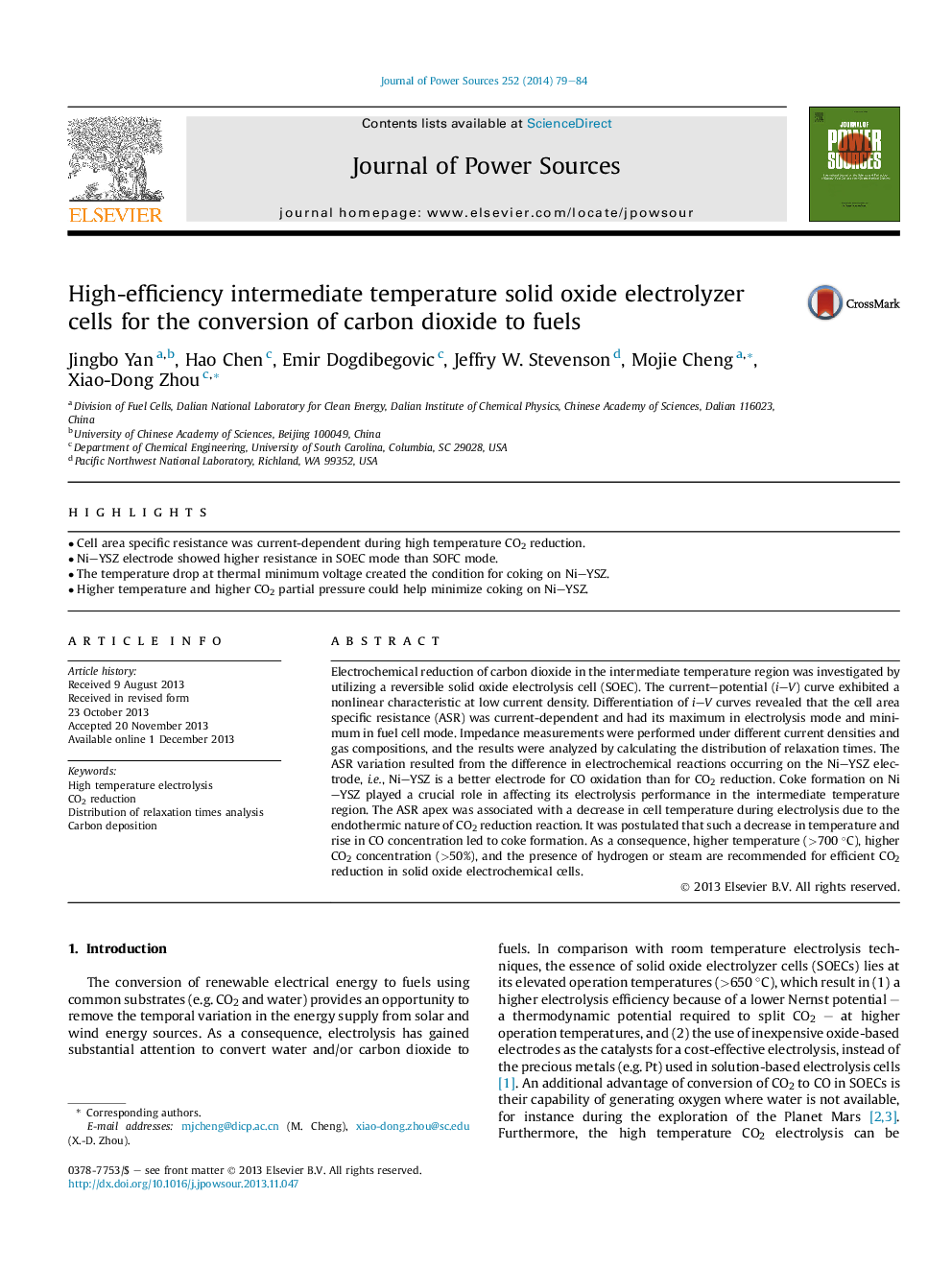| Article ID | Journal | Published Year | Pages | File Type |
|---|---|---|---|---|
| 7737552 | Journal of Power Sources | 2014 | 6 Pages |
Abstract
Electrochemical reduction of carbon dioxide in the intermediate temperature region was investigated by utilizing a reversible solid oxide electrolysis cell (SOEC). The current-potential (i-V) curve exhibited a nonlinear characteristic at low current density. Differentiation of i-V curves revealed that the cell area specific resistance (ASR) was current-dependent and had its maximum in electrolysis mode and minimum in fuel cell mode. Impedance measurements were performed under different current densities and gas compositions, and the results were analyzed by calculating the distribution of relaxation times. The ASR variation resulted from the difference in electrochemical reactions occurring on the Ni-YSZ electrode, i.e., Ni-YSZ is a better electrode for CO oxidation than for CO2 reduction. Coke formation on Ni-YSZ played a crucial role in affecting its electrolysis performance in the intermediate temperature region. The ASR apex was associated with a decrease in cell temperature during electrolysis due to the endothermic nature of CO2 reduction reaction. It was postulated that such a decrease in temperature and rise in CO concentration led to coke formation. As a consequence, higher temperature (>700 °C), higher CO2 concentration (>50%), and the presence of hydrogen or steam are recommended for efficient CO2 reduction in solid oxide electrochemical cells.
Related Topics
Physical Sciences and Engineering
Chemistry
Electrochemistry
Authors
Jingbo Yan, Hao Chen, Emir Dogdibegovic, Jeffry W. Stevenson, Mojie Cheng, Xiao-Dong Zhou,
